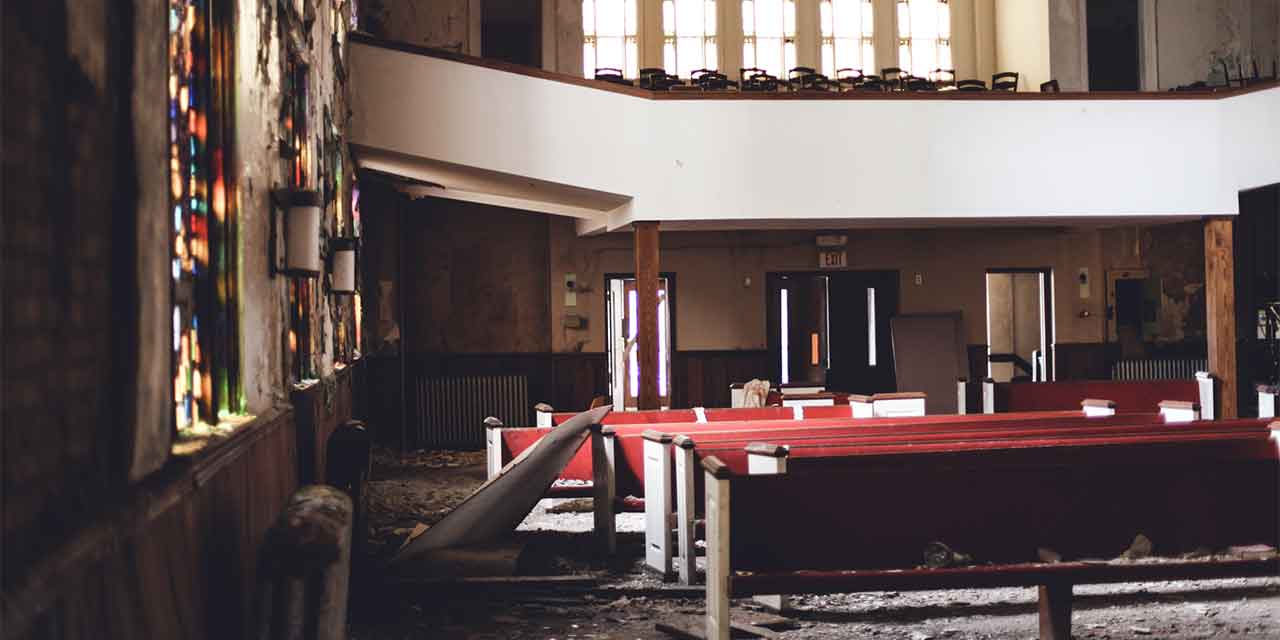There is a right time for everything:
A time to be born;
A time to die;
A time to plant;
A time to harvest…
Ecclesiastes 3:1-2, TLB
The opening line of this well-known passage from Ecclesiastes reveals a writer who pays close attention to life. We’ve boiled down these familiar words to what most of us probably say on our way back from a great vacation: “Nothing lasts forever.”
As great and awesome as your church is or was, it too will grow old and diminish in its effectiveness. And yes, it will eventually die. Think about it. How many of the churches that Paul planted still exist? If churches started by the greatest missionary who ever lived eventually died, then you can be sure your church will die, too. Every church will go through natural cycles of growth, decline, and death. I tell every church I work with that it too will die someday, the question is not whether your church will die, the question is: Did it make disciples who multiplied while it lived?
A Predictable Pattern
The general rule of thumb we see is a slow decline between thirty and forty years. A great deal of research has been done to understand the natural life cycle that churches often undergo.
The concept of an organizational life cycle first originated in the corporate world with the theory that organizations tend to mirror human life cycles. Later, Robert Dale, Martin Saarinen, George Bullard and others adapted the concept to relate to the local church1.
Church plants can’t reverse the tide alone. Our older, established churches desperately need to find new life and a restoration of their mission.
Bullard uses ten stages to describe the life cycle of a church, including birth, infancy, childhood, adolescence, adulthood, maturity, empty nest, retirement, old age, and death2. He estimates that 80 percent of congregations in North America are on the aging side of the life cycle or are living in the last five stages3. The following diagram illustrates an adapted version of the life cycle bell curve.
Four Elements
In each stage of life, churches tend to lean heavily on one of four elements:
- At the start of the church, there is nothing more than a vision by a church planter and his or her team.
- That vision begins to attract others until the church becomes a vibrant place of great relationships both inside and outside the church. The vision has attracted like-minded people who genuinely enjoy being together, and they have redemptive relationships with those far from Christ.
- As the church matures, new ministries that multiply are put into place to build disciples and to reach the local community. These ministries are simply organized ways of creating and keeping healthy relationships.
- And then finally, the growth becomes too much to manage so structures are put in place to manage the church. Boards, committees, and systems are formalized. This structure ensures that ministries function consistent with the vision and healthy relationships. These structures ensure ministries are healthy and multiplication can continue.
This all happens on the front side of the curve. Ideally, a new life cycle is intentionally launched before a church gets too far down the backside of the life cycle curve.
The Backside of Life Cycles
On the backside of the curve is where we find our declining and plateaued churches. On the backside, a church begins to lose the four elements it once had:
- Vision is the first to go as the church continues to do what it has always done. As chapters 11 and 15 in Acts illustrate, Jerusalem didn’t embrace subsequent visions. New vision seems to require morphing and if it doesn’t change, frustration will follow.
- As the frustration grows, the past ways of doing things work less, and then the relationships begin to suffer. By pulling in, the people in the church often don’t build redemptive relationships with people distant from Christ. This “pulling in” exacerbates the decline, and people begin to leave as the tension grows. At this point, often a new vision is quickly squashed as the church continues to “hold on to what we know.” We’ve heard many stories from churches nearing the end. The basic narrative is almost always the same: “The world around us is changing and going to hell, and we have no way to reach it.”
- As the church continues to contract, it’s left with fewer people and multiple ministries that they try desperately to maintain. Eventually, the ministries can no longer continue. Dan Turner, https://dying2restart.org, is correct in saying that people can smell death, and visitors quickly pick up that a church is in contraction.
- Typically, when the death of a congregation is near, there is little ministry; few healthy relationships with people distant from Christ or within the body; and ultimately, no vision. But there’s still a lot of structure. I’ve worked with churches that had less than thirty people, but their constitution called for thirty-five positions to be filled on their board and committees. They tried to fulfill all of these ministries with only thirty people! Once, it took me two meetings and about six hours of work to get a church of twelve people to eliminate their weekly board meetings! The only thing they could cling to anymore was structure. In another church with about the same number of members, the Sunday school superintendent didn’t want to leave her position unfilled!
Where do you feel your church is on the life cycle?
You can take our Church Life Cycle assessment to get an idea of where you are on the curve at this time. Better yet, have a representative group of people complete the assessment for your church and you’ll get a much better idea of where you are on the continuum. We can help you through the process or you can do it yourself. In any case, you should take time to evaluate where you are, so you can make informed decisions as to where to go next.
Notes:
- Gary L. Mcintosh, Taking Your Church to the Next Level: What Got You Here Won’t Get You There (Grand Rapids, MI: Baker Books, 2009), 27.
- George Bullard Jr., “Life Cycle Model 2009 Version,” The Columbia Partnership, http://www.bullardjournal.org/ (accessed January 7, 2013).
- George Bullard Jr., Radical Congregational Transformation (Atlanta, GA: TCP Leadership Series, 2012), Kindle e-book, locations 102-104.


